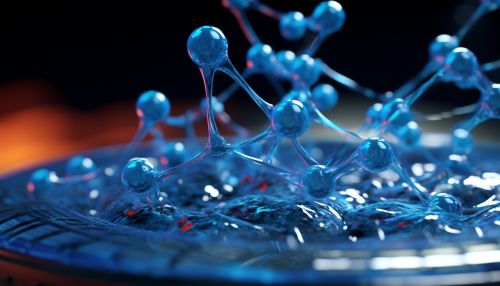Phosphorylation
Introduction
Phosphorylation is a crucial biochemical process that involves the addition of a phosphate group to a protein molecule. This process is fundamental in a variety of cellular functions, including cell division, protein synthesis, and signal transduction pathways. The process is catalyzed by enzymes known as kinases, and the reverse process, known as dephosphorylation, is catalyzed by enzymes called phosphatases.


Biochemical Process
Phosphorylation is a post-translational modification that alters the structural conformation of a protein, which can impact its activity, localization, and ability to interact with other molecules. The phosphate group is added to a specific amino acid residue in the protein, typically serine, threonine, or tyrosine in eukaryotes, and histidine or aspartate in prokaryotes and plants. This addition is facilitated by the transfer of a phosphate group from ATP, a process that requires energy.
Role in Cellular Functions
Phosphorylation plays a vital role in the regulation of many cellular processes. It is involved in the control of cell cycle progression, the activation of enzymes, the regulation of gene expression, and the modulation of cellular signaling pathways. It also plays a critical role in the response to environmental stimuli and stress, and in the regulation of cell growth and differentiation.
Kinases and Phosphatases
Kinases are enzymes that catalyze the transfer of a phosphate group from ATP to a specific substrate, usually a protein. There are many different types of kinases, each with a specific set of substrates and functions. Phosphatases, on the other hand, are enzymes that remove phosphate groups from proteins, reversing the process of phosphorylation. The balance between the activities of kinases and phosphatases is crucial for maintaining cellular homeostasis.
Clinical Significance
Aberrant phosphorylation processes can lead to a variety of diseases, including cancer, diabetes, and neurodegenerative disorders. Many drugs target kinases and phosphatases to modulate their activity and restore normal cellular function. Understanding the complex network of phosphorylation and dephosphorylation events is therefore of great importance in the field of biomedical research.
